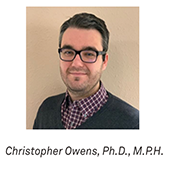Assessing the Healthy People 2030 LGBT Objectives
In August 2020, the US Department of Health and Human Services (HHS) released Healthy People 2030, its set of national public health objectives for the next decade. These data-driven, science-based health objectives look at specific health conditions and behaviors, as well as different populations of people, health settings and systems, and social determinants of health. Taken together, the Health People 2030 objectives provide a robust picture of current and emerging national health challenges and identify goals for the improvement of Americans’ health and wellbeing over the next 10 years.
Once again, Healthy People included objectives specific to lesbian, gay, bisexual, and transgender (LGBT) populations. Healthy People 2020, the predecessor to this current iteration, had two objectives focused on increasing the collection and use of data on LGBT populations and a series of “related objectives” that were relevant, but not specific, to LGBT health. By comparison, the 2030 LGBT objectives are more numerous and detailed.
We spoke with ISGMH postdoctoral scholar Christopher Owens, Ph.D., M.P.H., about the Healthy People 2030 LGBT objectives. Owens explained the three main themes of the LGBT objectives and identified three shortcomings of these objectives.
Focus Areas of the Healthy People 2030 LGBT Objectives
Improving the health of LGBT young people
“A number of the LGBT objectives focus on sexual and gender minority (SGM) adolescents and youth, particularly high school students in grades 9-12. There is no focus on elementary or middle school students. These objectives are centered on bullying, illicit drug use, and suicide. We know these are major health concerns for SGM adolescents, who are disproportionately affected by all three.”
Increasing the collection of SOGI measures on national surveys
“We won’t understand the disparities faced by SGMs at-large and cannot create baseline data about their experiences if we don’t collect data on sexual orientation and gender identity (SOGI) on huge national surveys, such as the Youth Risk Behavior Surveillance System (YRBSS) or the Behavioral Risk Factor Surveillance System (BRFSS). There is a familiar saying among researchers that ‘if you aren’t counted, you don’t count’—we have to ask questions about sexual orientation and gender identity for SGM people to see themselves reflected in surveys themselves and the data collected from surveys. For most large national surveys, individual states decide whether to ask questions about sexual orientation and gender identity—these SOGI measures are considered ‘module’ topics that states can opt into asking in addition to mandatory ‘core’ topics. Healthy People 2030 encourages more states to include SOGI module topics in surveys.”
Improving HIV prevention and care efforts
“The 2030 objectives look at reducing HIV infections and improving the HIV care continuum by increasing testing, increasing linkage to care for individuals diagnosed with HIV, and increasing the percentage of people living with HIV who have achieved viral suppression. This is an essential health prerogative because HIV disproportionately affects SGM populations, especially among young sexual minority males and transgender women.”
How Could the Healthy People 2030 LGBT Objectives be Improved?
Stronger transgender student objectives
“Healthy People 2030 separates lesbian, gay, and bisexual (LGB) high school students from transgender high school students in their objectives focused on bullying, illicit drug use, and suicidal thoughts. The reason is that we don’t have strong baseline data about transgender, non-binary, and gender diverse students because questions about gender identity aren’t asked in enough nationally representative surveys. We really need to change this so that gender diverse people are counted, so that they are represented in national data, and so that they see themselves reflected in surveys questions.”
Focus on structural disparities
“The LGBT objectives don’t address underlying structural disparities like cisgenderism and heterosexism that affect sexual and gender minorities, particularly young people. Objectives or indicators about access to primary care, mental health care services, and HIV care are also missing or left vague—even though we know that there is a shortage of healthcare infrastructure that addresses the needs of SGM people in many areas of the country.”
More precise terminology and measurements
“What is bullying and how do we measure it? Where are high school students who identify as non-binary, queer, asexual, or unsure/questioning represented? How is linkage to HIV care beyond an initial CD4 t-cell count test measured? The terminology used in some objectives is too vague to ensure that we measure what we intend to measure, implement changes, and sustain target goals.”
The Takeaway
“Overall, these are positive changes that Healthy People 2030 has specific LGBT objectives that relate to
SGM youth disparities and data collection. I appreciate they separated sexual minority and gender minority, since we know there are disparities between and within SGM groups. It’s great that Healthy People 2030 encourages states to include SOGI measures in surveys,” concluded Owens. 